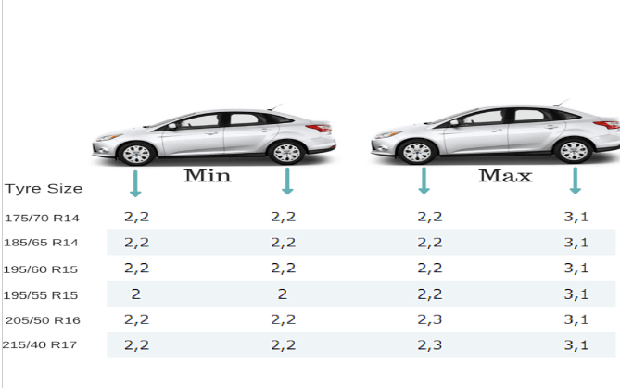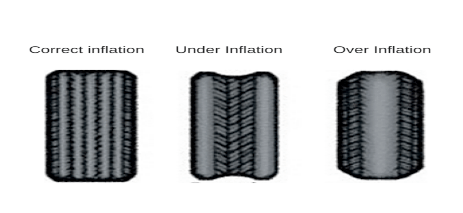Are you monitoring your tyre pressure?
The importance of monitoring your tyre pressure
It is important for us to know that our vehicle is in good working condition and one of the ways we can do this is by monitoring our car’s tyre pressure.If you are not regularly checking the pressure of your tyres you could be putting yourself at risk and reducing the vehicle's overall performance.
Paschal Donohoe TD, minster for Transport, Tourism and Sport introduced a new Fixed Charge Notice (FCN) offence for people who drive with worn damaged tyres on Irish roads.
This was introduced in April 2016. Two penalty points and a fixed fine of €80 can be issued to a motorist who fails to ensure their tyres are in good condition.

Reasons to monitor tyre Pressure
- Landmark report reveals that vehicle factors contributed to 1 in 8 fatal collisions analysed between 2008 and 2012.
- 111 people lost their lives and 30 were seriously injured in collisions where vehicle defects were a contributory factor.
- Decreases braking distance.
- Correctly inflated tyres will also increase your fuel efficiency. So by adhering to a routine maintenance and replacement regime you will save money not to mention make sure you and your loved ones are safer on the road

Tyre Requirements
Tyres should be free from defects, have a thread depth of at least 1.6mm and be properly inflated.Tyre pressure should be checked once every two weeks especially if you are embarking on a longer trip. Simply follow the guide below to ensure that your tyres meet these requirements and are road worthy.
How to Find the size of your tyre
It is very easy to find the size of a vehicle’s tyre. On the Tyre you will find the manufacturer’s name and type of tyre followed by a code e.g 215/60R15. This code relates to the size of the tyre. It is important to know the size of the tyre as that will disclose the tyre pressure required.Example: 215/60R15
- 215 is the width of the tyre in millimetres.
- 60 is the aspect ratio or tyre profile.
- R means it is radial construction.
- 15 is the diameter of the wheel rim in inches.
How to find the correct pressure requirements
For each car and make tyre pressure will vary. Even front and rear tyre pressure is different. It is crucial to know this as over or under inflating a tyre can result in a serious accident. The optimum inflation level can be found on your door panel or search the inflation level for your tyre size.The table below relates to the standard tyre pressure for a ford focus which was revealed by MyVehicle.ie as the top used car sold by Independent Dealers.
Tyre Over and Under Inflation
Under inflating a tyre places greater pressure on the vehicle by increasing braking distance on wet surfaces, causing larger rolling resistance and risk of sudden tyre pressure brake while driving. While over inflating can also be dangerous. It can lead to faster wear of the car suspensions and worse grip.
Checking the tyre depth
Tread depth must not be less than the legal minimum limit of 1.6 mm. The tread is the part of the tyre in contact with the road in normal conditions.Your vehicle’s safety and performance, particularly in wet conditions, are reduced as your tyres wear. You can check your tyre tread depth by simply running a €1 coin along the centre of the wheel. If the gold part of the coin is not visible then the tyres tread are above requirements. However, if it is visible your tyre could be approaching the minimum legal requirement and you should get them checked by a professional
A recommendation from the Irish Tyre Association details that you should ideally replace your tyres in fours. However, you can replace your tyres in two's and should ensure that any new tyres you put on your car, go onto the back. Looking after your tyres and making sure they are the recommended tyres for your vehicle will extend the life of your tyres.

Author

Justin Kavanagh
Justin Kavanagh is a recognised leader
in automotive intelligence and vehicle
data supply to the entire motor industry.
He has almost 20 years experience in
building systems from the ground up.
As the Managing Director of Vehicle
Management System, he understands the
need and importance of trustworthy and
reliable vehicle history and advice to
both the trade and the public.
Follow me on LinkedIn